Throughout the world, harbors, ports, and coastlines are constructed in ways that disrupts local coastal ecosystems and reduces biodiversity. Shimrit Perkol-Finkel created a start-up company in Israel that makes sustainable concrete blocks that mimics and is designed based off of marine life and promotes the growth of sea life in order […]
Although strong and stiff human-made composites have long been developed, the microstructure of today’s most advanced composites has yet to achieve the order and sophisticated hierarchy of hybrid materials built up by living organisms in nature. Clay-based nanocomposites with layered structure can reach notable stiffness and strength, but these properties are usually not accompanied by […]
Researchers at the University of Washington have recently created RoboFly, a 74-mg flapping-wing robot that can move in the air, on the ground, and on water surfaces. Insect-size robots could have numerous useful applications, for instance, aiding search and rescue (SAR) missions, simplifying the inspection of infrastructures and speeding up agricultural […]
Inspired by embryonic wound closure, we present mechanically active dressings to accelerate wound healing. Conventional dressings passively aid healing by maintaining moisture at wound sites. Recent developments have focused on drug and cell delivery to drive a healing process, but these methods are […]
Self-Healing Materials
This project aims to study self-organizing materials that are able to adapt their structure and associated properties in response to a changing environment. Inspired by the organization of bacterial communities, we aim to develop self-organizing, adaptive and self-healing materials that can be further used, for instance, in sensing or drug delivery.
[…]
The Compass Project, Local
The Compass Project is a self-formed group of graduate and undergraduate students in the physical sciences at UC Berkeley. Their goals are to improve undergraduate physics education, provide their members with opportunities for professional development, and increase retention of students, especially those from populations typically underrepresented in the physical sciences. Compass fosters a diverse, collaborative […]
This paper presents the design and development of a bio-inspired flapping wing type Micro Air Vehicle (MAV). Bio-inspiration is implicated to design a flapping wing aerodynamic ornithopter, controlled using a micro scale integrated on- board electronic circuits and communication device. The study of flapping flight from an experimental standpoint brought insight […]
Researchers from Rutgers University, New Jersey, have created bio-inspired, programmable micro-needles that enhance tissue adhesion using Projection micro-stereolithography (PµSL). Influenced by the micro-hooks of parasites, barbed stingers of honeybees, and quills of porcupines, 4D printed backward-facing barbs were fabricated and designed to deform horizontally to be minimally […]
Researchers in the lab of UC Santa Barbara professor Daniel Morse have long been interested in the optical properties of color-changing animals, and they are particularly intrigued by the opalescent inshore squid. Also known as the California market squid, these animals have evolved the ability to finely […]
A jumping leg with one degree of freedom (DOF) is characterized by high rigidity and simple control. However, robots are prone to motion failure because they might tip over during the jumping process due to reduced mechanism flexibility. Mechanism design, configuration optimization, and experimentation were conducted in this study to achieve […]
Plants like the Venus flytrap close their mouth-like leaves at almost imperceptible speed. Based on these snap-buckling mechanics, researchers designed soft actuators that can change volume at incredible speeds. Two elastic membranes, much likes the ‘lips’ on the Venus flytrap, are activated pneumatically with a pressurized chamber. This innovation could be […]
Pest insects and other parasites latch onto their hosts by inserting backward-facing barbs into their tissue. Scientists have now copied that strategy, in a system that could someday replace painful hypodermic needles. Link to video: https://www.youtube.com/watch?v=fw-2r6ybWaQ
Researchers from Rutgers University, New Jersey, have created bioinspired, programmable microneedles that enhance tissue adhesion using Projection micro-stereolithography (PµSL). Influenced by the microhooks of parasites, barbed stingers of honeybees, and quills of porcupines, 4D printed backward-facing barbs were fabricated and designed to deform horizontally to be minimally invasive upon tissue contact.
[…]
Bird-friendly glass looks like spider web to birds
A new bird-friendly glass has been developed that could prevent the deaths and serious injuries of countless birds that fly at high speed into glass windows. Birds do not see transparent glass, but are misled by the landscape reflected in the window or seen through it into thinking their way is […]
News, What This PigeonBot Tells Us About the Future of Flight
Lentink’s team turned to the humble pigeon in order to discover these secrets of avian flight. “[They’re] under-appreciated fliers,” Lentink told Popular Mechanics. In a report published in Science Robotics, Lentink and his team discovered that pigeons—as well as most other flying birds—do not use individual muscles to control each of […]
Paper, Sharkskin inspired antibacterial surface
Nearly 12 million wounds are treated in emergency departments throughout the United States every year. The limitations of current treatments for complex, full-thickness wounds are the driving force for the development of new wound treatment devices that result in faster healing of both dermal and epidermal tissue. […]
Bio-inspired Approaches for Engineering Adaptive System
Adaptive systems are composed of different heterogeneous parts or entities that interact and perform actions favouring the emer- gence of global desired behavior. The system should self-organize and continue performing their goals so, entities must self-evolve and self-improve by learn- ing from their interactions with the environment. This paper describes existing […]
News, Soft Robotics Find a Place in the Ocean
Scientists who designed a marine robot to survey ocean life were inspired by eel larvae: In May 2016, Christianson and his colleagues at UCSD set out to build this soft robot. They weren’t the first to look to the natural world for this purpose—other research groups have used fish and manta […]
Sticky problems? We highlight current efforts to design and engineer mussel‐inspired, DOPA‐containing bioadhesives with production by microbial strains. We discuss the in vivo use of orthogonal translation with expanded genetic codes and reprogrammed microbial strains as new tools in bioinspired material science to […]
Abstract: Homarus americanus, known as American lobster, is fully covered by its exoskeleton composed of rigid cuticles and soft membranes. These soft membranes are mainly located at the joints and abdomen to connect the rigid cuticles and greatly contribute to the agility of the lobster in swimming and preying. Herein, we […]
Abstract: Inspired by embryonic wound closure, we present mechanically active dressings to accelerate wound healing. Conventional dressings passively aid healing by maintaining moisture at wound sites. Recent developments have focused on drug and cell delivery to drive a healing process, but these methods are often complicated by […]
News, Mother Nature Inspired Helmet
This work shows lessons learned from bio-inspired designs using protective structures such as pomelo peel, nautilus shell and woodpecker skull, Tovar said. “Our work explores a design approach to tailor the response of a cellular material subject to impact, an approach that offers the potential to mitigate head injury by decreasing acceleration, decreasing penetration and […]
News, Scientists Mimic Fireflies to Make Brighter LEDs
The nighttime twinkling of fireflies has inspired scientists to modify a light-emitting diode (LED) so it is more than one and a half times as efficient as the original. Researchers from Belgium, France, and Canada studied the internal structure of firefly lanterns, the organs on the bioluminescent insects’ abdomens that flash to attract mates. The […]
Mantis shrimp developed an internal structure to protect its club it uses to attack the preys with great force. This unique structure that wraps around its club protects it from being damage as it attacks its preys. The University of California Riverside reverse engineering the club and has determined that it […]
News, New droplet-based electricity generator
Generating electricity from raindrops efficiently has gone one step further. A research team has recently developed a droplet-based electricity generator (DEG), featured with a field-effect transistor (FET)-like structure that allows for high energy-conversion efficiency and instantaneous power density increased by thousands times compared to its counterparts without FET-like structure. This would […]
The massive and long-term service of 5083 aluminum alloy (AA5083) is restricted by several shortcomings in marine and industrial environments, such as proneness to localized corrosion attack, surface contamination, etc. Herein, we report a facile and cost-effective strategy to transform intrinsic hydrophilicity into water-repellent superhydrophobicity, combining fluorine-free […]
Researchers looked into shark skin to create more aerodynamic horizontal stabilizers for aircrafts. Shark skin is unique in that it has drag-reducing properties that allow sharks to more easily in the water. This property would be very useful in aeronautics as it is […]
Abstract: Growth of ice on surfaces poses a challenge for both organisms and for devices that come into contactwith liquids below the freezing point. Resistance of some organisms to ice formation and growth, eitherin subtidal environments (e.g. Antarctic anchor ice), or in environments with moisture and cold air (e.g. plants, intertidal) […]
The solar steam process, akin to the natural water cycle, is considered to be an attractive approach to address water scarcity issues globally. However, water extraction from groundwater, for example, has not been demonstrated using these existing technologies. Additionally, there are major unaddressed challenges in extracting potable water from seawater including salt accumulation and long‐term […]
“Small-scale drones have enough sensing and computing power to find use across a growing number of applications. However, flying in the low–Reynolds number regime remains challenging. High sensitivity to atmospheric turbulence compromises vehicle stability and control, and low aerodynamic efficiency limits flight duration. Conventional wing designs have thus far failed to […]
A new class of robots, called FlyCroTugs, can lift objects 40 times their weight, using design ideas borrowed from wasps and geckos. You might know wasps for their ability to brainwash cockroaches or inflict one of the most painful stings on Earth—one so powerful that the actual […]
Rapidly running arthropods like cockroaches make use of passive dynamics to achieve remarkable locomotion performance with regard to stability, speed, and maneuverability. In this work, we take inspiration from these organisms to design, fabricate, and control a 10cm, 24 gram underactuated hexapedal robot capable of running at 14 body lengths per […]
Bio-inspired Nanocomposite Membranes for Osmotic Energy Harvesting
Osmotic energy represents a widespread and reliable source of renewable energy with minimal daily variability. The key technological bottleneck for osmotic electricity is that membranes must combine highly efficient ion rectification and high ionic flux with long-term robustness in seawater. Here, we show that nanocomposite membranes with structural organization inspired by […]
When biomedical engineer Jeff Karp has questions, he looks to animals for answers. In 2009, Karp gathered his team at the Brigham and Women’s Hospital in Boston to brainstorm novel ways to capture circulating tumor cells (CTCs) in the bloodstream. They mulled over the latest microfluidic devices. […]
Paper, Biomimicry: 9 Ways Engineers Have Been ‘Inspired’ by Nature
What is Biomimicry you ask? Biomimicry is an approach to innovation that seeks sustainable solutions to human challenges by emulating nature’s time-tested patterns and strategies. In short, biomimicry is the process of taking the innovations that exist in nature and applying them to technology. Believe it, or not, some of the […]
This paper uses a bio-inspired design strategy based on tree branch joints to improve the damage tolerance of co-cured composite T-joints. The design of tree branch joints at different length scales from the microstructural to the macro-length scale was investigated. X-ray computed tomography of a pine tree revealed three main features […]
Learn about our two Decals!
 Click here to find out more about our Fall Bioinspired Design Decal and our Spring Bioinspired Design in Action Decal – ALL MAJORS are welcome.
Click here to find out more about our Fall Bioinspired Design Decal and our Spring Bioinspired Design in Action Decal – ALL MAJORS are welcome.Berkeley BioDesign Community
 Click here to learn about the BioD: Bio-Inspired Design @ Berkeley student organization or here to signup for more info.
Click here to learn about the BioD: Bio-Inspired Design @ Berkeley student organization or here to signup for more info.Search
Student Login


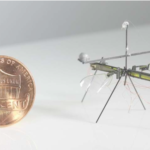
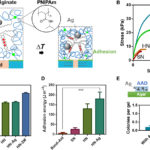
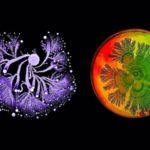


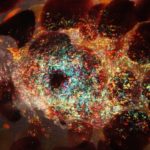
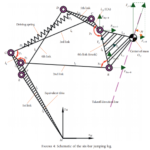
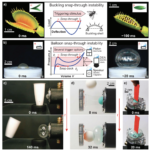
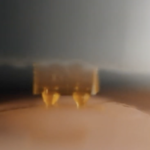


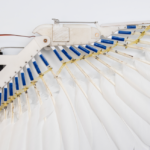



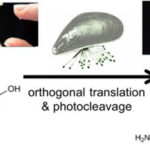
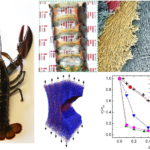
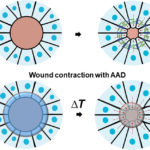


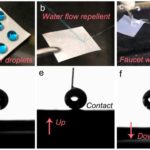


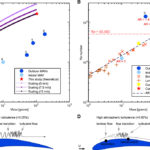
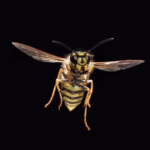


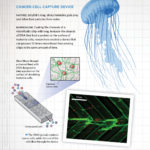

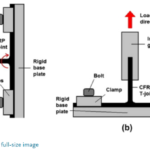


I imagine that the neurological circuits underlying these processes are governed by both 2d spacing maps with their brains as…
to reduce the impact of car accidents, it may be possible to study the force diverting physics of cockroaches to…
you see this type of head-bobbing stability in many avian creatures related to pigeons like chickens. the head ability to…
not like they taught horses how to run! this is an example of convergent evolution where both sea creatures and…
The brain functions in a similar way with neuronal connections. our brains are able to utilize the multiplicity of connections…